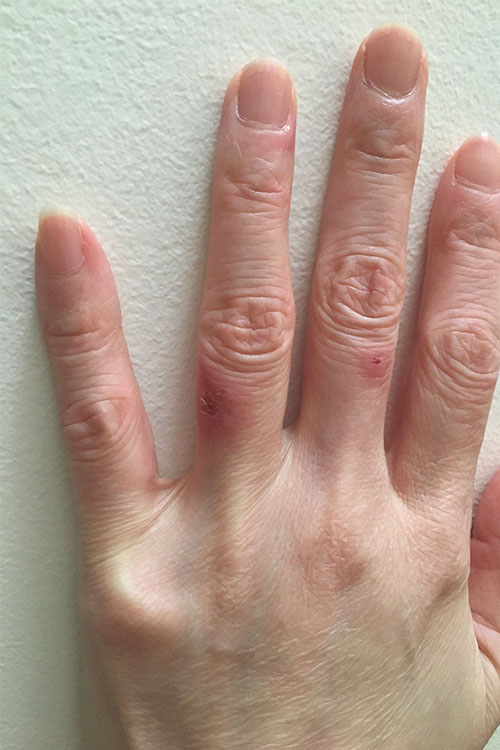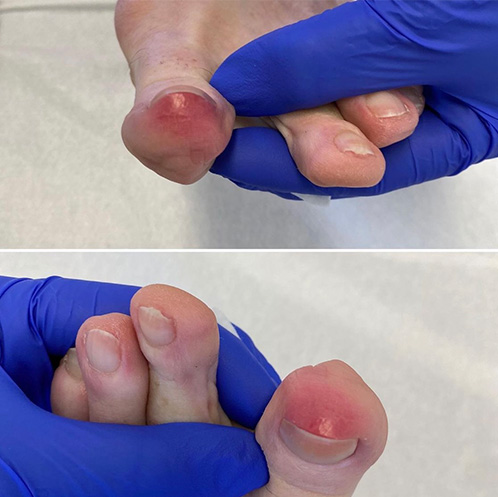Chilblains
Chilblains (also known as perniosis) are localised inflammatory lesions caused by prolonged vasoconstriction and ischaemia from continued exposure to the cold. Dampness and wind increase the effect of the cold. Chilblains develop acutely as burning red or purple swellings, most often on toes and fingers (less often on heels, nose, ears and thighs). Most lesions resolve in 1 to 3 weeks. See here for photos of chilblains.
Chilblains are more common in females, and people with low body weight or impaired peripheral circulation.



Management focusses on preventive measures to avoid further episodes of chilblains. Advise patients to:
- avoid cold environments
- wear gloves and warm clothes to keep body core and extremities warm
- wear thick socks and closed shoes (eg boots)
- use heating pads judiciously
- stop smoking (especially if patients have impaired peripheral circulation).
For extensive or painful chilblains, use a potent topical corticosteroid. Occlusive dressings can be used to improve efficacy of the corticosteroid and to protect the skin from trauma. Use:
1betamethasone dipropionate 0.05% ointment topically, twice daily, with or without an occlusive dressing betamethasone dipropionate betamethasone dipropionate betamethasone dipropionate
OR
1mometasone furoate 0.1% ointment topically, twice daily, with or without an occlusive dressing. mometasone furoate mometasone furoate mometasone furoate
If chilblains do not respond, use a more potent topical corticosteroid. Use:
betamethasone dipropionate 0.05% ointment in optimised vehicle topically, twice daily, with or without an occlusive dressing. betamethasone dipropionate betamethasone dipropionate betamethasone dipropionate
For severe and recurrent chilblains, consider preventive therapy during colder months. Vasodilators (eg calcium channel blockers [such as nifedipine], phosphodiesterase inhibitors, topical glyceryl trinitrate, pentoxifylline), low-dose aspirin and fish oil have been used as preventive therapy for chilblains.
Refer patients with severe or atypical presentations of chilblains to a specialist for investigation of causes and further management. Causes may include haematological conditions (eg myelodysplastic and myeloproliferative disorders, cold-sensitive dysproteinaemias), autoimmune conditions (eg antiphospholipid antibodies, connective tissue disease) and viral hepatitis. Chilblain lupus—systemic lupus erythematosus (SLE) skin lesions that clinically resemble chilblains—may be a differential diagnosis.
